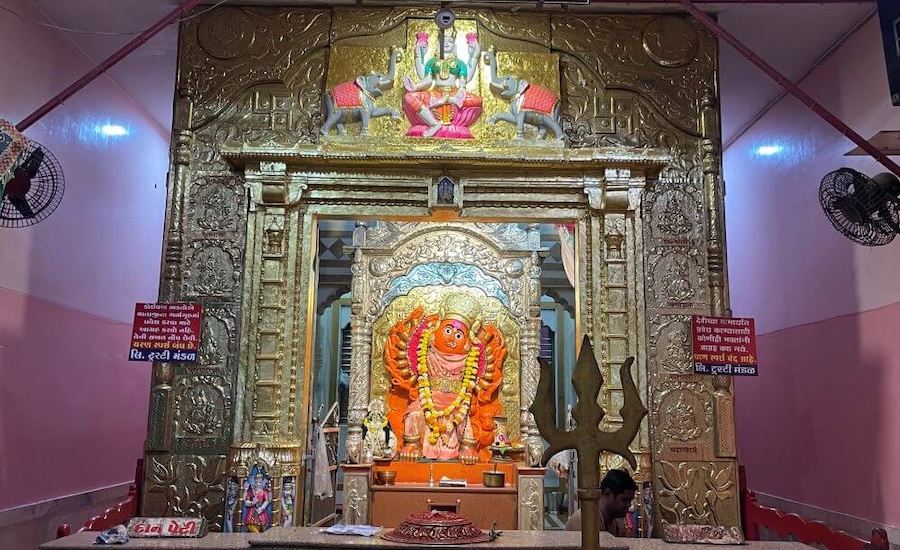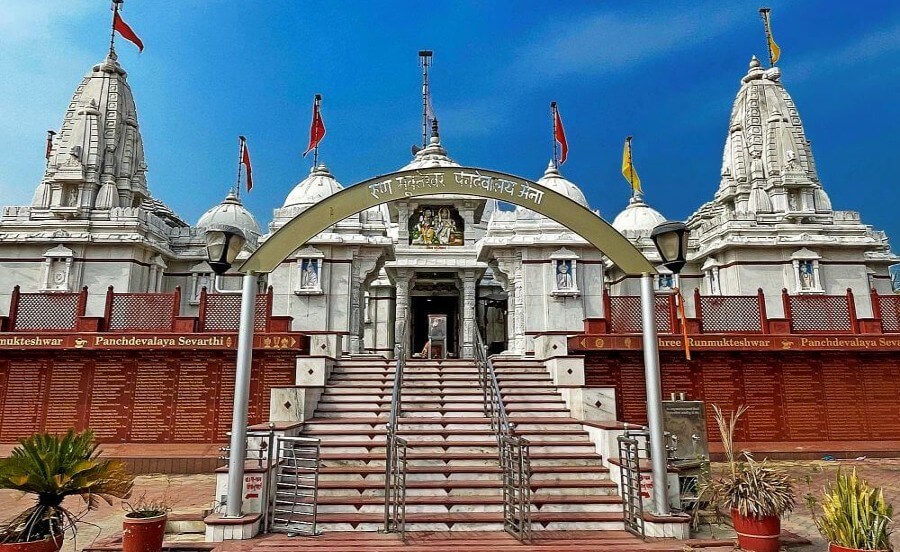
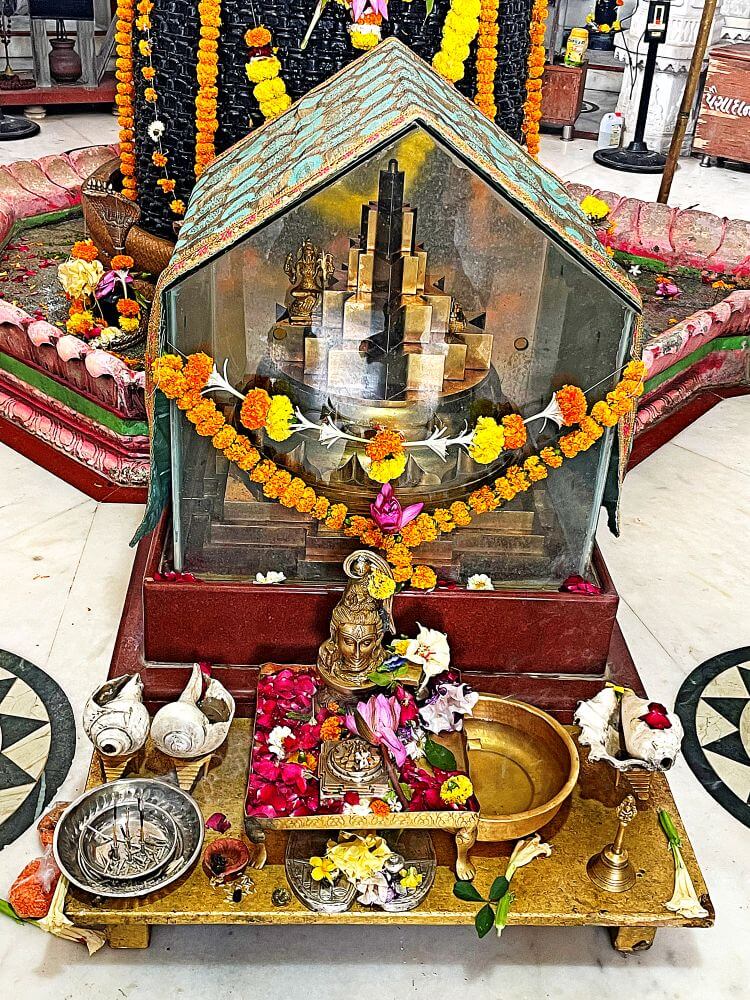 The Runmukteshwar Panchadev Temple, located in Ena village in Surat’s Palsana Taluka, is a historic site renowned for its alignment with traditional temple architecture and Vedic principles. Constructed around 250 years ago, this temple features a massive Shivling weighing 18 tonnes and standing 10.5 feet tall. The Shivling is adorned with 1,007 Ayonij Shivlings, and devotees believe that performing water or milk abhisheka (sacred anointment) on this Shivling grants the spiritual merit of worshipping 1,008 Shivlings. It is widely believed that performing pooja at this Shivling helps devotees overcome debts and fulfil their wishes.
The Runmukteshwar Panchadev Temple, located in Ena village in Surat’s Palsana Taluka, is a historic site renowned for its alignment with traditional temple architecture and Vedic principles. Constructed around 250 years ago, this temple features a massive Shivling weighing 18 tonnes and standing 10.5 feet tall. The Shivling is adorned with 1,007 Ayonij Shivlings, and devotees believe that performing water or milk abhisheka (sacred anointment) on this Shivling grants the spiritual merit of worshipping 1,008 Shivlings. It is widely believed that performing pooja at this Shivling helps devotees overcome debts and fulfil their wishes.
The temple was built in 1793 by the Baroda princely state under Govindrao Gaekwad, son of the influential ruler Damaji Gaekwad. Both father and son were devout followers of Lord Shiva and contributed significantly to the construction and renovation of temples. Despite political instability and financial challenges during his reign, Govindrao Gaekwad commissioned the Runmukteshwar Temple and entrusted its care to the villagers of Ena.
Today, Ena is one of Gujarat’s most prosperous and well-developed villages, also known for its Non-Resident Indian (NRI) connections. With a population of about 5,000, over half the residents have settled abroad, particularly in Canada and the United States. These NRIs have significantly contributed to the village’s development, including funding the temple’s renovation 13 years ago.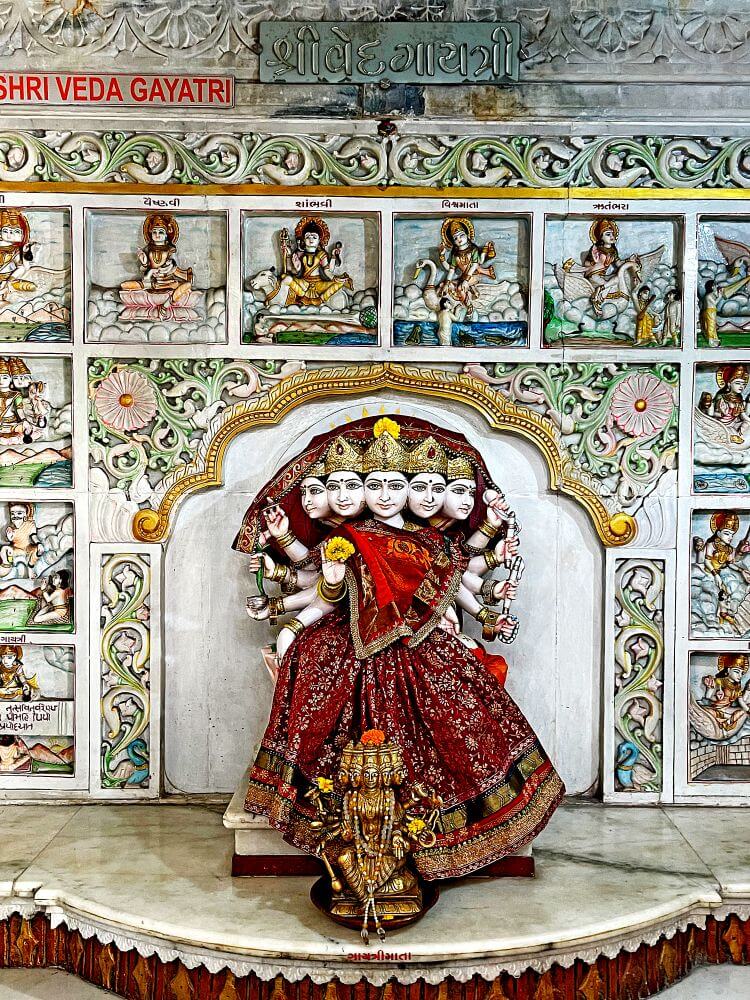
The temple is known as Runmukteshwar Panchadev Temple because it houses deities representing the five elements (Panchamahabhutas) : Vishnu, representing Akash (Space), Surya (Sun) representing Vayu (Air), Devi Mata representing Fire, Ganesha representing Water and Shiva representing Earth. In Sanskrit these deities are called as Adhisthata Devta.
The temple, constructed entirely of marble, features striking shikharas (temple spires) that dominate its façade. Upon entering the complex through a gated perimeter wall, visitors step into a courtyard lined with shops selling puja items and religious artefacts. The temple is built on an elevated platform, accessible via a flight of stairs, and flanked by shrines dedicated to Ganesha and Hanuman. The main mandapa (entrance hall) features intricately carved pillars supporting a ceiling adorned with large marble reliefs depicting Shiva, Parvati, Ganesha, Kartikeya, Nandi, and a lion. In the sanctum sanctorum (garbhagriha), a black stone Nandi (Shiva’s mount) faces the central Shivling, with a tortoise sculpture placed at the forefront. The entrance to the sanctum is flanked by Gujarati-style door guardians (dwarpals), and the semi-circular threshold (mandarak) is engraved with auspicious symbols.
In the sanctum (garbhagraha) of the temple is the colossal Shivling, carved from granite sourced from Bengaluru.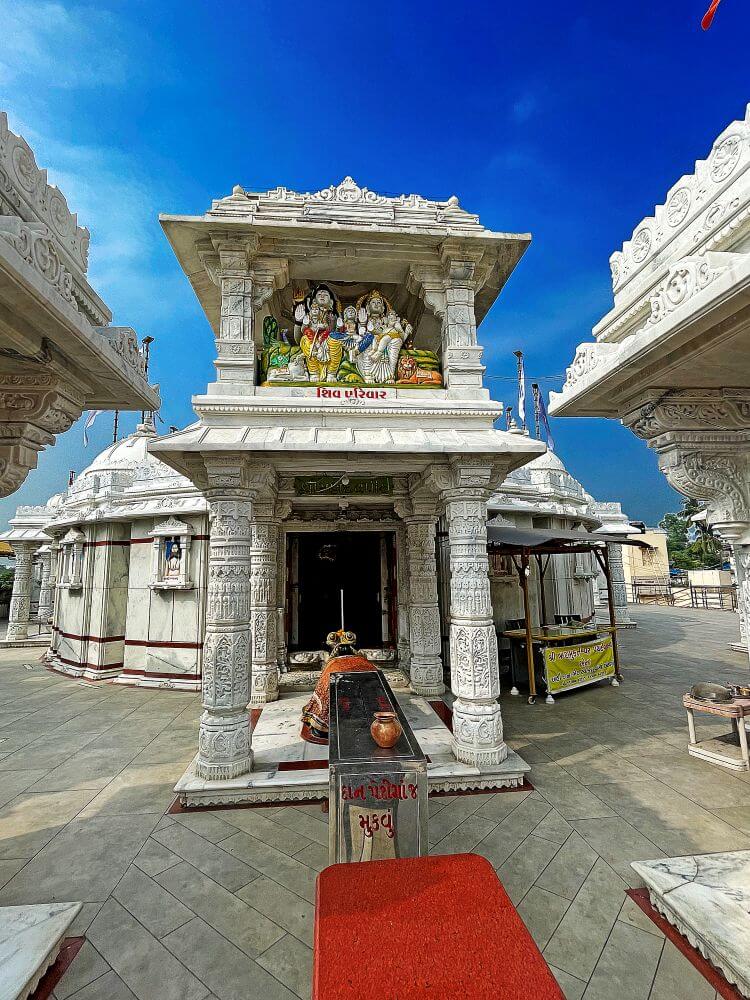 Installed during the temple’s renovation, this Shivling symbolises Brahma, Vishnu, and Shiva: The base (square) represents Brahma, the middle (octagonal) portion represents Vishnu and the top (cylindrical) portion signifies Shiva.
Installed during the temple’s renovation, this Shivling symbolises Brahma, Vishnu, and Shiva: The base (square) represents Brahma, the middle (octagonal) portion represents Vishnu and the top (cylindrical) portion signifies Shiva.
Weighing 18 tonnes and standing 10.5 feet tall, the Shivling’s surface is intricately engraved with 1,007 Ayonij Shivlings. Beneath the sanctum lies a copper vessel (rasakumbha) containing seven tonnes of mercury, infused with nine sacred gems and medicinal herbs. This arrangement, connected to the main Shivling via a copper wire, is believed to generate and sustain divine energy. Visitors can view the Shivling’s underground chamber through a glass panel on the sanctum floor. The Shivling includes a Gomukh (cow’s mouth) projection, a rare architectural detail. A large copper vessel continuously pours water onto the Shivling during abhisheka. A coiled serpent rests atop the Shivling as a symbolic canopy. The sanctum also houses statues of Parvati and Narmada Devi.
The temple’s outer walls feature shrines dedicated to various saints and sages. The complex includes smaller temples for: Ganapati, Surya Narayan, Dakshinamurti, Brahma, Vishnu, Rama-Sita-Lakshman, Radha-Krishna, Maha Durga, Balaji, Shani, Navagraha, Vishwakarma, and Panchmukhi Ved Gayatri. 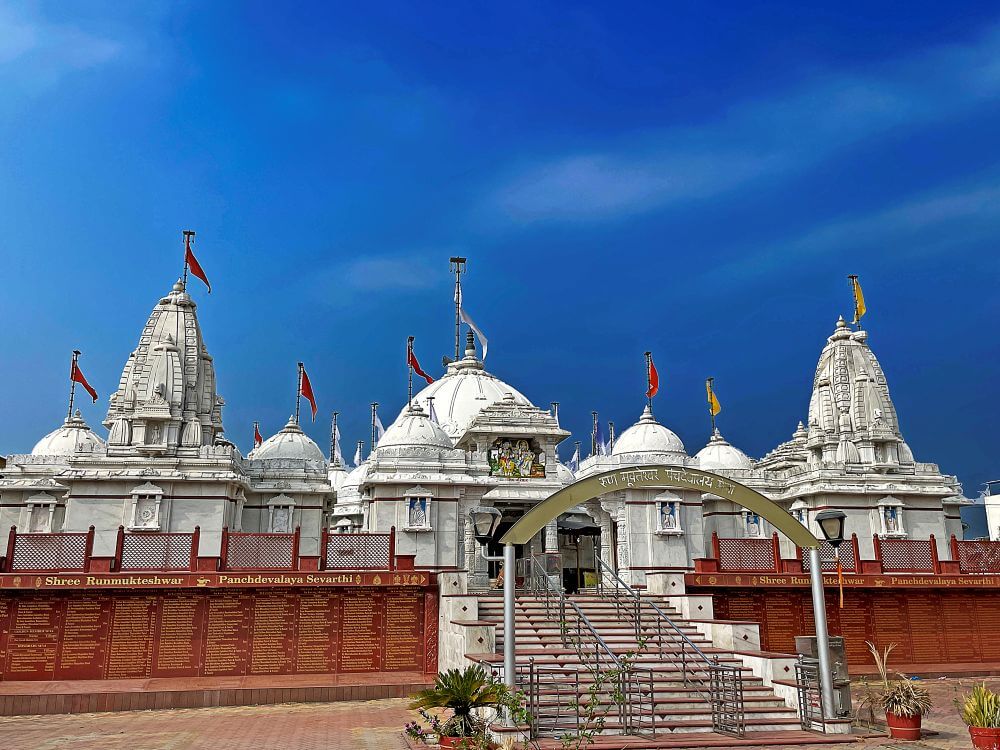 The temple also has unique shrines for representations of the four Vedas: Rigveda (Donkey-headed), Yajurveda (Goat-headed), Samaveda (Horse-headed) and Atharvaveda (Monkey-headed).
The temple also has unique shrines for representations of the four Vedas: Rigveda (Donkey-headed), Yajurveda (Goat-headed), Samaveda (Horse-headed) and Atharvaveda (Monkey-headed).
Devotees can visit the temple for darshan (viewing the deity) between 6:00 am to 12:00 pm and again from 3:00 pm to 8:00 pm. During the month of Shravan, devotees can have darshan from 5:00 am to 10:00 pm. Various religious programmes are organised here throughout the year. On Maha Shivaratri, hundreds of devotees from different regions visit the temple to seek blessings of the Shiva. On this occasion, special religious ceremonies and events are conducted. The Shravan month witnesses a large influx of devotees. Additionally, during the Adhik Maas (a sacred leap month in the Hindu calendar), Bhagavata Purana recitations are held on the temple’s stage in the premises.
